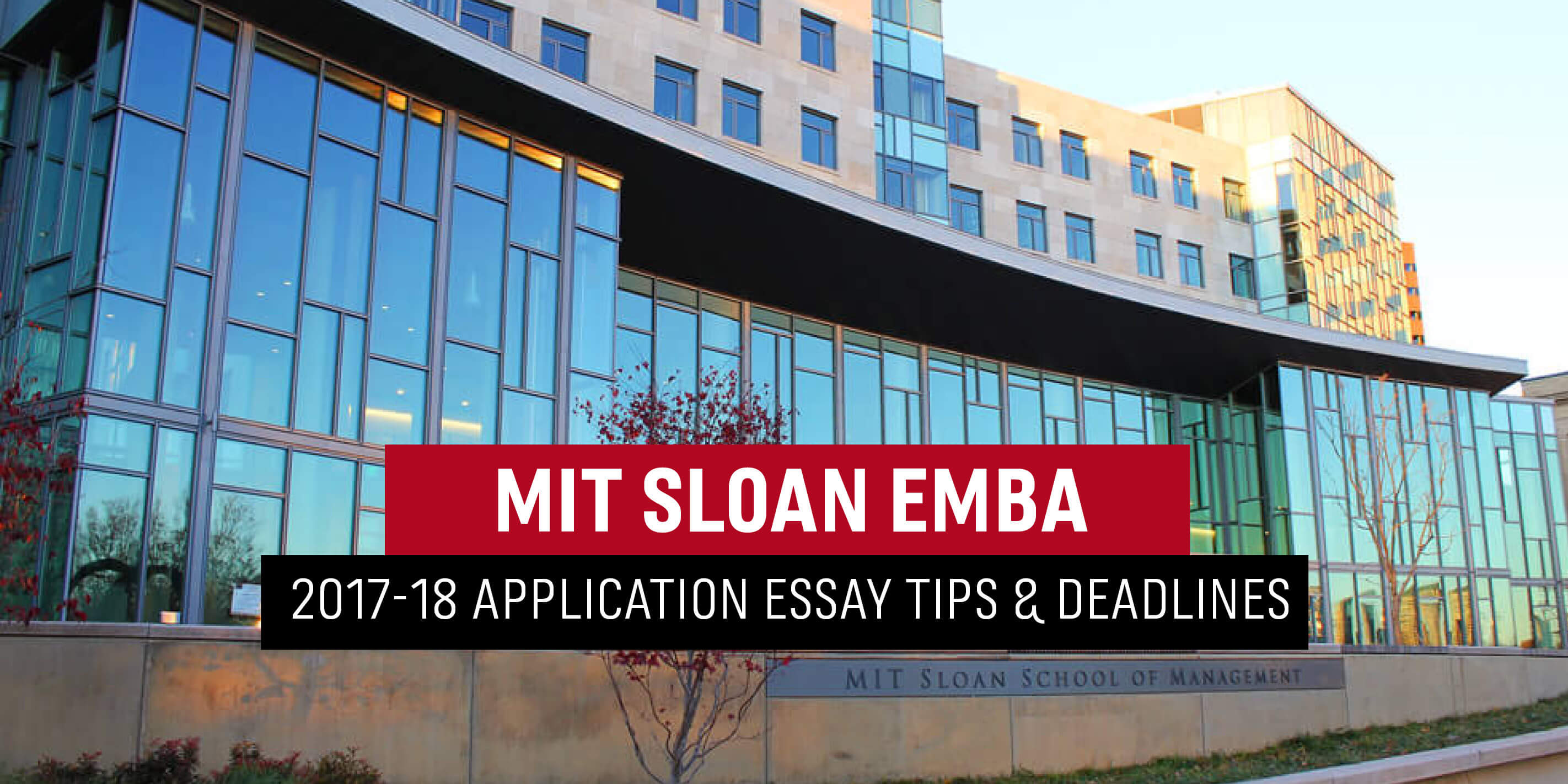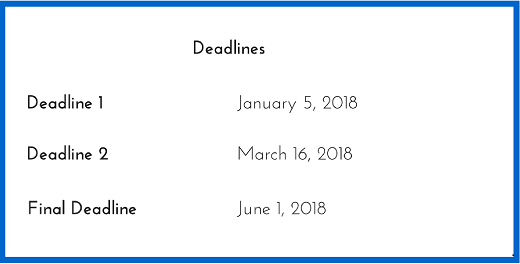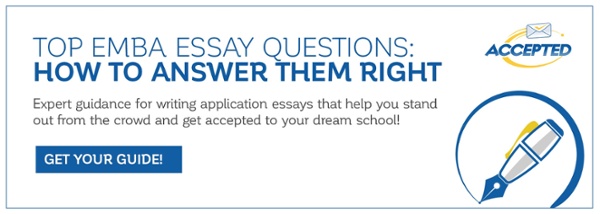

These essay questions show that MIT seeks applicants who have the judgment and practical skills to take on the challenges that will fly at them as they re-define industries and functions. Applicants who push the boundary of what’s possible and provide “principled leadership” amidst a torrent of change. The essays (including Statement of Purpose) are your main means to show that you possess, as MIT’s website states, “strong leadership performance, global perspective, functional expertise, and innovation.” While the statement of purpose challenges you to succinctly create your applicant portrait, the two essay questions probe how your perspective, ideas, and thinking lead to specific impacts and outcomes. As always, MIT Sloan is interested in what you’ve done – actions you’ve taken and impacts you’ve created – based on your reading of a situation.
Notably, in two out of the three required essays, the question refers to the program’s culture and values. There is no one formula for these elements (I’ve seen people with vastly differing views of what an “improved world” would look like be admitted); the key is that you have such a dimension in your goals and life. Ensure your essays portray your fit in this regard.
In an overall plan for the essays, the statement of purpose works as a positioner, an opening pitch, a frame. In each of the two essays, strategically select experiences that show different facets of you to give a comprehensive view. Also, if possible, discuss a recent experience in at least 1 of the essays, to allow the adcom to see you working at a high level and to show what you’ll bring to the table.
Statement of Purpose:
The MIT Executive MBA Students and Community are: Open, Collaborative and Inventive. Please tell us why you are pursuing the MIT Executive MBA, and what you will contribute to your classmates and the community at MIT. Include examples of success working with organizations, groups, and individuals. For those reapplying, please highlight developments since your last submission. (Limited to one page)
This is your portrait – your candidacy at a glance. It should convey a vivid, immediate sense of you as a person and as a candidate for this program. It should go beyond just facts to present a point of view and a message (theme). Determine your message first, before drafting the essay, and let it guide you in selecting and elaborating the content details.
Beware of a potential pitfall: in discussing the requested examples of success working with organizations, groups, and people, do not repeat your resume in prose format. Select your examples thoughtfully, focusing on those that (a) are truly distinctive and relevant to the EMBA and/or (b) support your goals directly or indirectly, and (c) reflect your message. Make a short, meaningful point about each, such as the insight it lends or its influence on you.
For why you are pursuing the EMBA, of course you’ll discuss your professional goals and objectives. Focus not only on what you want to do, but also why — what you want to accomplish for the organization and/or its customers/market (your “vision”).
The contributions should reference your experience from work or outside work; think of what about you would be most meaningful and interesting to prospective classmates. This element of your response is an opportunity to show that you understand the program.
Essays:
Question 1. The educational mission of the MIT Sloan School of Management is “to develop principled, innovative leaders who improve the world.” Please discuss how you will contribute toward advancing this mission based on examples of past work and activities. (Limited to one page)
In answering this question, clarify what “principled, innovative leader” and “improving the world” mean to you. These points represent your point of view, your perspective – they should be short (sometimes even a phrase suffices), but without them this essay lacks focus. The bulk of the essay will focus on action – your examples of past work and activities that make the case for how you have been, and will continue to be, a principled, innovative leader who improves the world. The key to making this a gripping, memorable essay is strong experiences and examples combined with your reflection on them pertaining to the essay’s theme. End by briefly discussing how you will build on these experiences to be such a leader in the future.
Question 2. Please tell us about a time when you introduced an idea that changed the way in which your organization approached a business challenge or opportunity. Comment on the factors considered, and the barriers/obstacles faced. (Limited to one page)
This question requires you to combine two realms: thought (idea) and action (you introduced…). MIT Sloan seeks people who have strength in both areas – who have vision and can execute that vision.
A suggested approach is to draft it straightforwardly, as a story: start with your idea and what prompted it, and then narrate your action – how you introduced the idea, and how you implemented it. Conclude with the results, clarifying the change in approach to the opportunity or challenge.
There are 2 ways to make this approach work. Option A: As you narrate, include and “zoom in” on factors you considered and the barriers you encountered in the process; make them part of the story. Option B: narrate the story, and then in a concluding paragraph discuss the factors you considered and the barriers/obstacles faced.
Additional Information (Optional). Please use this section to share information that you would like the MIT Executive MBA Admissions Committee to know, but could not share elsewhere in the application. Examples of such information are explanations of missing information (such as poor grades or resume gaps), inventions, hobbies, awards, or publications.
• Limit the number of pages; less is more.
• We cannot follow links to watch videos. All necessary information should be written in text.
• If you add multiple documents to this section, the most important should be added last (so it will be on the top).
There are two types of information this essay may include: the “must have” and the “enhance.” Must-have includes the type of information and explanations alluded to in the question – points that address issues and/or gaps. Discuss them succinctly and straightforwardly. Enhancements are everything else, and you’ll use sound judgment in deciding what is worth a busy adcom reader’s time. Don’t chat about a casual hobby that you happen to do – remember this is optional (you really don’t want the adcom to think, “Why am I reading this?”); do discuss meaningful items that shed relevant light on your candidacy.
If you would like professional guidance with your MIT Sloan EMBA application, check out Accepted’s MBA essay editing and MBA admissions consulting or our MBA Application Packages, which include advising, editing, interview coaching, and a resume edit for the MIT Sloan EMBA application.

***Disclaimer: Information is subject to change. Please check with individual programs to verify the essay questions, instructions and deadlines.***
 Cindy Tokumitsu has advised hundreds of successful applicants, helping them gain acceptance to top MBA and EMBA programs in her 15+ years with Accepted. She would love to help you too. Want Cindy to help you get Accepted? Click here to get in touch!
Cindy Tokumitsu has advised hundreds of successful applicants, helping them gain acceptance to top MBA and EMBA programs in her 15+ years with Accepted. She would love to help you too. Want Cindy to help you get Accepted? Click here to get in touch!
Related Resources:
• Ace the EMBA: Expert Advice for Rising Executives, a free guide
• Executive MBA Applicants: 4 Immediate Action Items
• 3 Tips for Writing a Winning EMBA Essay
The post MIT Sloan Executive MBA Essay Tips & Deadlines appeared first on Accepted Admissions Blog.


No comments:
Post a Comment